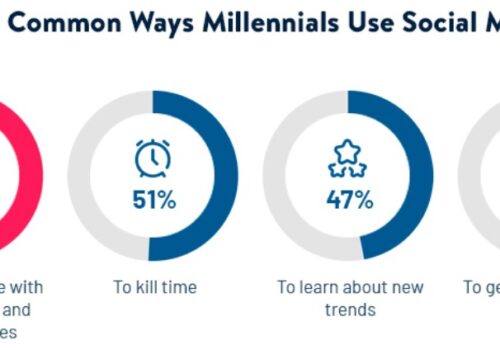Online learning is on the rise, and it’s changing the way people learn and develop new skills. I’ve gathered some important facts and figures that show just how big online learning has become.
These statistics will give you a clear picture of how many people are using online courses, how effective they are, and why they’re becoming so popular.
Let’s explore these numbers and discover the world of online education together.
| Statistic | Value |
|---|---|
| Total eLearning Market Expected by 2025 | $325 billion |
| US Businesses and Online Education | 98% integration by 2020 |
| US eLearning Market Growth (2020-2024) | $12.81 billion |
| eLearning Impact on Retention | 25% to 60% improvement |
| Corporate e-Learning Industry | $38.09 billion growth |
| eLearning and Revenue | 42% increase in the US |
| COVID-19 Impact on eLearning | 400% increase in demand |
| Effectiveness of eLearning | 25% to 60% higher retention |
| eLearning Barriers | Various challenges |
| eLearning Growth | $376 billion by 2028 |
| eLearning Platforms | Various online platforms |
| Financial Statistics in eLearning | 8% revenue increase in Q3 2022 |
Online Learning Statistics Around The World
Source: Pexels
- By 2025, the global eLearning market is expected to be worth $325 billion.
- In 2017, 77 percent of US businesses used online education, but by 2020, 98 percent would have integrated it into their learning strategy.
- The online learning market in the United States will rise by $12.81 billion between 2020 and 2024.
- When eLearning is provided, retention rates increase by 25 percent to 60 percent.
- The corporate e-learning industry is expected to grow by $38.09 billion between 2020 and 2024.
- eLearning is credited with a 42 percent rise in revenue in the United States. The organizations with “extensive training programs” have 218 percent more income per member of the team and 24 percent higher profit margins, according to a survey of 2,500 companies.
- IBM was able to conserve around $200 million by switching to eLearning.
- In 2019, 67 percent of organizations in the United States offered to learn possibilities through smartphones.
- Nearly half of students worldwide have engaged in online learning.
- A majority of students prefer online learning over traditional classrooms.
- Most businesses now incorporate online training solutions.
- Daily engagement in online learning activities is high among US students.
- Online learning significantly boosts retention rates in both educational and professional settings.
- Online training has been shown to enhance employee performance.
- 49% of students worldwide have engaged in online learning.
- The number of online learners is projected to reach 57 million by 2027.
COVID-19 Impact Statistics and eLearning
- During the pandemic of 2020, China’s school system depended significantly on distance learning.
- As a consequence of COVID-19, 97 percent of university students have transitioned to online learning.
- Since the COVID-19 outbreak, 41% of students believe their view of their present school has deteriorated.
- The pandemic has touched over 1200 schools and colleges in over fifty states in the U.S.
- In the United States, 21% of universities have adopted a blended learning model.
- 44 percent of US educational institutions have fully embraced web-based learning platforms and resources, with online education now serving as their principal mode of instruction.
- The COVID-19 epidemic sparked a rapid boom in the eLearning business, with demand increasing by as much as 400 percent.
Statistics on Traditional vs Online Education
Source: Pexels
- When compared with conventional learning retention ratios of 8 percent to 10 percent, eLearning enhances learning retention ratios by 25 percent to 60 percent.
- In comparison to conventional face-to-face team member training, web-based learners have more autonomy over their learning experience.
- Individual learning pace (95 percent) and reduced travel costs are the two most compelling reasons for employees to select online education over traditional classroom-based learning (84 percent ).
- When compared to conventional face-to-face classes, 85 percent of students think the virtual learning process was better or at least comparably satisfying.
- 70% of students say online learning is better than traditional classroom learning.
- Online learning can reduce learning time by 40% to 60%.
Statistics on Corporate Online Education
- Between 2020 and 2024, the corporate eLearning industry is expected to grow by $38.09 billion.
- Corporate distance learning takes 40 percent to 60 percent less duration to complete than traditional learning.
- Around 40% of Fortune 500 organizations use online education to train their employees.
- 41.7 percent of Fortune 500 organizations utilize technology to train their personnel in some way.
- Learning & development professionals now devote 57% more time to online learning than they did 3 years ago.
- The corporate eLearning market is anticipated to be valued at 50 billion dollars by 2026.
- In 2018, 82 percent of businesses employed distance learning for at least a few of their compliance training.
- In the same year, 28% of businesses offered all of their compliance training digitally.
- In 2018, eLearning accounted for 25.6 percent of all corporate training hours. To overcome knowledge gaps among team members, 62 percent of firms use virtual education and development programs.
- Microlearning, which consists of 5-minute bite-sized lessons, saw a 700 percent increase in usage in 2020.
- The average time it takes to complete a micro lesson is five to seven minutes.
- Each microlearning course has an average of 4-5 microlessons.
- Microlearning has a 70 percent to 90 percent retention rate, compared to 15% for classical learning.
- Microlearning has a 17 percent boost in learning transfer, a 50 percent increase in engagement, a 300 percent increase in development speed, and a decrease in development costs (50 percent ).
- 80% of businesses now offer online learning or training solutions.
- Corporate online learning boosts employee engagement and performance.
Statistics on Online Education and Its Economic Impact
- According to online education data, eLearning courses save power consumption by 90 percent.
- eLearning increases the productivity of team members by 15 percent to 25 percent.
- eLearning has been shown to increase team member participation by up to 18%.
- According to a 2018 survey, 90% of corporate organizations provide eLearning chances to their staff.
- When AstraZeneca, a global pharmaceutical business, needed to train 500 salespeople about a new product, 95% of their students completed all of the available eLearning training programs.
- Hendrick Automotive Group is another company that has a high level of employee involvement. It is one of the biggest privately held car dealerships in the United States, and it wanted to replace its old LMS with a platform that focuses on engagement. As a result, in just eight months, the business received over 750,000 visits to the LMS (learning management system).
- Organizations feel that employing web-based learning provides them a competitive edge in 72 percent of cases.
- Inside the LinkedIn Learning Report, 94 percent of learners reported that taking more time to learn had helped them advance in their careers.
- In 2020, 38 percent of the workforce will have improved their skills, compared to 14 percent in 2019.
- The U.S. online learning market will be worth $687 billion by 2030.
- China’s online learning industry is projected to reach $171 billion by 2030.
Attitudes of Educators Towards eLearning Statistics
Source: Pexels
- In the education industry, eLearning is the quickest-growing market.
- After the epidemic, 33 percent of universities said they would continue offering their courses partially or entirely online.
- Only around half of professors believe that distance education is as successful as in-classroom learning.
- eLearning is not well-supported by 33% of educators.
- Instructors in academic institutions are apprehensive about increased engagement in online classrooms, according to 71% of them.
- Instructors want to improve students’ access to online information, according to 39% of them.
- Instructors think they need to modify courses to match online mediums in 33% of cases.
Statistics on eLearning Growth
- The global online learning market was valued at $187,877 billion by the end of 2019.
- It had surpassed $200 billion at the end of 2020, and it is expected to reach 376 billion dollars by 2028.
- The virtual learning market is expanding at a 9.23% compound annual growth rate.
- Between 2020 and 2024, the eLearning industry in the United States could rise by $12.81 billion.
- By 2027, the global market for mobile learning might be worth $80.1 billion.
- The eLearning sector is expected is valued at $243 billion by 2022.
- The open digital course market is predicted to be worth 374 billion dollars by 2026.
- With a yearly growth rate of 23 percent, smartphone learning is among the fastest-growing industries in the distance learning business.
- Between 2014 and 2018, venture capital investments in European EdTech startups increased by 540 percent.
- According to recent research, a large number of online course consumers have a traditional degree and are well-educated.
- The online learning industry is expected to grow by a 9.1% CAGR by 2026.
- Expected to grow by more than 200% between 2020 and 2025.
Statistics on eLearning Platforms
- Udemy is the most popular eLearning course site, with over 20,000 content authors and twelve million students.
- Over 150,000 distance education programs in a variety of professional areas are available on the Udemy platform, including personal development, software, data science, finance, accounting, IT and many others.
- Teachable is the 2nd most popular eLearning platform, with over 3 million students and 20,000 different online learning courses.
- To date, Teachable and Thinkable have generated $1 billion in revenue for course authors.
- Tata Interactive Systems is the most recognized course platform in India.
- Learning management systems are used by an average of 73.8 million people.
- Self-habits, marketing, drink & food are the most prominent independent course categories.
- Email marketing is the most prominent program on the Teachables site.
- In 2020, EDX will have surpassed 110 million overseas student enrollments, an increase of 29 million from the previous year.
- MOOC providers acquired 60 million additional students, with Coursera leading the way (which enrolled 50% of them).
- Udemy’s course consumption of wellness and mental health skills, such as resilience, stress management & anxiety management, increased by more than 1,000 percent year over year.
- In the technology and software industry, the adoption of listening skills increased by 3,210 percent from 2019 to 2020.
Financial Statistics in eLearning
- In 2021, eLearning assisted 42 percent of US businesses in increasing revenue.
- According to research, nearly half of the organizations polled report a gain in revenue as a result of transitioning from traditional training techniques to eLearning.
- Companies that provide eLearning claim an increase of 26% in revenue per team member.
- The cost of developing an online program can vary from 144 to 10,800 dollars, based on a variety of factors like the certification offered and the number of modules included.
- An online course costs, on average, $177 to develop.
- The US online learning industry’s value in 2022 was $100 billion.
- The industry’s total revenue increased by 8% in Q3 2022.
Quick Links:
- E-Learning Stats and Trends
- The Frightening Reality of Sitting Statistics & Facts
- Napping Statistics, Facts, and Figures
- Generation Z Statistics, Facts, and Trends
Conclusion: Online Learning Statistics 2025
eLearning is unquestionably the way of the future in education. As these figures demonstrate, the sector is booming.
It’s a very practical technique to train personnel and improve their knowledge and skills. Not only that, but it has the ability to completely rewrite the rules when it concerns how we think about information transfer.
Sources: techjury, bau.edu, findstack, shiftelearning, guru99, growthengineering, thinkimpact, elearninginfographics







